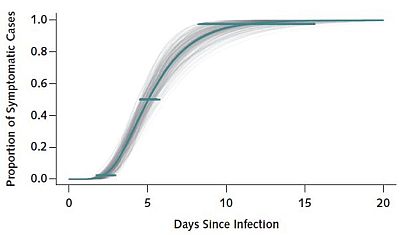A new study found that less than 2.5 percent of COVID-19 cases showed symptoms within 2.2 days while 97.5 percent showed symptoms within 11.5 days.
Coronavirus patients shows symptoms after an average of five days, according to a study by public health scientists that says a quarantine period of 14 days is "reasonable."
An accurate estimate of the incubation period for a new virus makes it easier for experts to predict the dynamics of the outbreak and find a balance between draconian control measures and eliminating the spread.
As of Monday, the disease has infected 109,000 people and killed 3,800.
Italy has banned all non-essential movement across the country and ordered the closure of schools, gyms and museums.
An analysis of COVID-19 infections by researchers at the Johns Hopkins Bloomberg School of Public Health revealed an estimated median incubation period of 5.1 days — longer than for typical common colds.
The study found that less than 2.5 percent of showed symptoms within 2.2 days while 97.5 percent showed symptoms within 11.5 days.
Public health experts have been using a 14-day quarantine period based on estimates, but the Johns Hopkins data suggests that it is just about right for COVID-19.
Related: Italy coronavirus shutdown: what the emergency measures mean
The researchers estimated that, for every 10,000 individuals quarantined for 14 days, only about 101 would develop symptoms after being cleared and released.
“Based on our analysis of publicly available data, the current recommendation of 14 days for active monitoring or quarantine is reasonable, although with that period some cases would be missed over the long-term,” said study senior author Justin Lessler, an associate professor in the Bloomberg School’s Department of Epidemiology.
The study, published in the journal Annals of Internal Medicine, looked at 181 cases detected before February 24 where the likely dates of exposure and presentation were known.












